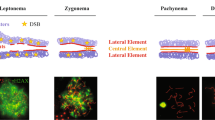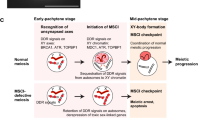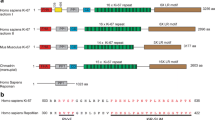Abstract.
A neocentromere at 3q26 was observed in a father and his daughter on a chromosome 3 with deleted centromeric region. No α-satellite DNA was detectable at the 3q26 neocentromere, but it was weakly positive with anticentromere (CREST) antibodies. Electron microscopy showed that the neocentromere formed microtubule-associated kinetochores with normal morphology and of the same size as the kinetochores of other large chromosomes. The deleted centromere formed a small linear marker chromosome that reacted strongly with anticentromere antibodies, but showed reduced kinetochore size. The 3q26 neokinetochore was stable under adverse growth conditions, which often caused kinetochore loss in the original 3-centromere on the small marker.
Similar content being viewed by others
Author information
Authors and Affiliations
Additional information
Received : 21 April 1998 / Accepted: 15 August 1998
Rights and permissions
About this article
Cite this article
Wandall, A., Tranebjærg, L. & Tommerup, N. A neocentromere on human chromosome 3 without detectable α-satellite DNA forms morphologically normal kinetochores. Chromosoma 107, 359–365 (1998). https://doi.org/10.1007/s004120050319
Issue Date:
DOI: https://doi.org/10.1007/s004120050319




